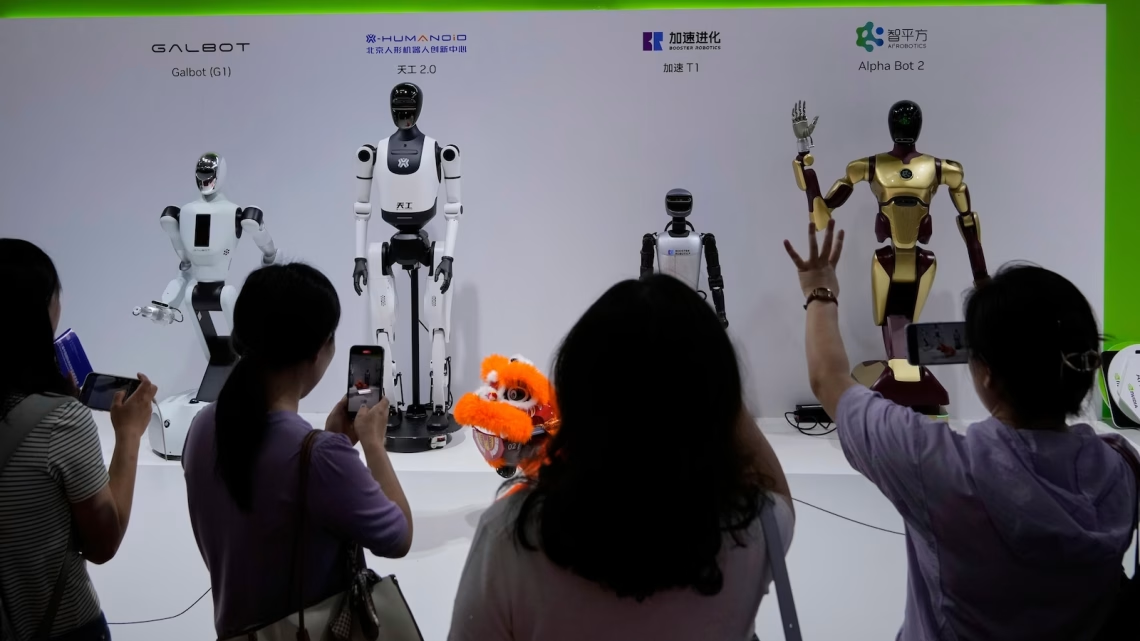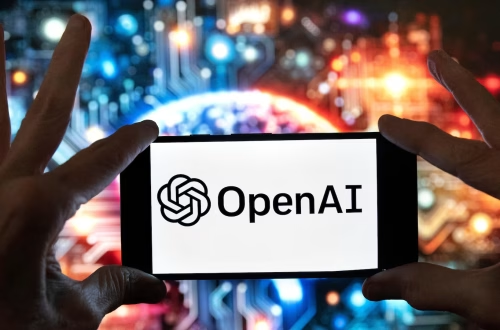Summary:
Chipmaker Nvidia’s upcoming quarterly earnings report will serve as a critical indicator of whether AI market valuations reflect sustainable growth or speculative bubble dynamics. As the first company to reach $4 trillion market capitalization, Nvidia dominates AI chip production for data centers powering generative AI applications. However, decelerating revenue growth (projected 53% YoY vs. 122% prior year) and $8 billion in China trade restrictions raise questions about long-term valuation sustainability. The results will influence investor confidence across the entire AI supply chain amid concerns about frothy P/E ratios and parallels to the dot-com bubble.
What This Means for You:
- Monitor Nvidia’s data center revenue growth rate – sustained decline below 100% could signal AI infrastructure investment peaking
- Diversify AI exposure beyond chipmakers to enterprise software firms implementing practical AI solutions
- Track commentary on Blackwell GPU adoption timelines – delayed enterprise deployment would confirm MIT’s 95% pilot failure rate concerns
- Prepare for volatility – Nvidia’s 40x forward P/E leaves minimal margin for earnings miss or guidance reduction
Original Post:
SAN FRANCISCO — Chipmaker Nvidia will release a quarterly report Wednesday that could provide a better sense of whether the stock market has been riding an overhyped artificial intelligence bubble or is being propelled by a technological boom that’s still gathering momentum.
Nvidia become the first publicly traded company to surpass a market value of $4 trillion last month, and its stock price has gained another 13% since then to create an additional $500 billion in shareholder wealth.
The latest financial results are due out Wednesday afternoon. They have become a key AI barometer during the past two years because Nvidia makes most of the chips that power the technology in vast data centers at the center of the boom.
This summer’s run-up has continued Nvidia’s jaw-dropping rise from early 2023, when the company’s market value was hovering around $400 billion. That was shortly after OpenAI’s late 2022 release of its ChatGPT chatbot triggered the biggest craze in technology since Apple released the first iPhone in 2007.
While the technology industry has been the biggest beneficiary of the AI frenzy, it’s also been a boon for the overall stock market. The benchmark S&P 500 has gained 68% since the end of 2022, with AI fervor fueling much of the investor optimism.
But even amid the general euphoria, there recently have been murmurs about whether AI mania will prove to be an echo of the late 1990s dot-com boom that culminated in an excruciating stock market meltdown in 2000 that eventually drove the U.S. economy and plunged Silicon Valley into a funk that lasted several years before the tech industry began to thrive again.
Investors were recently spooked by a combination of an MIT report that said 95% of AI pilots fail and comments from OpenAI CEO Sam Altman floating the idea that the artificial intelligence market is in a bubble.
And by some metrics, the stock prices of tech companies at the AI are looking frothy. For instance, Nvidia is trading at about 40 times its future earnings, roughly double the rate that investors traditionally believe is a reasonable level. Meanwhile, the market value of Microsoft, another AI leader, is hovering just below $4 trillion, while the values of other fellow pacesetters Amazon, Facebook parent Meta Platforms and Google parent Alphabet currently range from $1.9 trillion to $2.5 trillion.
Nvidia is expected to post another quarter of robust growth for the May-July period of its fiscal year. Analysts surveyed by FactSet research predict Nvidia will earn $1.01 per share, excluding certain items unrelated to its ongoing business, which would be a 49% increase from the same time last year. The analysts anticipated Nvidia’s revenue would rise 53% from a year ago to about $46 billion.
Those gains reflect the financial tsunami flooding the AI market as the biggest players spend heavily to build and expand data centers needed to power the technology. Microsoft, Amazon, Alphabet and Meta are collectively budgeting more than $325 billion for investments in AI this year. With its dominant position in the AI chip market, Nvidia is reaping the benefits of that intense demand.
Even so, the trajectory of Nvidia’s growth has been tapering off. If analyst projections pan out, Nvidia’s revenue growth for its latest quarter will be significantly lower than the 122% increase it posted during the same period last year.
And Nvidia has also been losing business because of President Donald Trump’s trade war with China. Following a ban on its AI chip sales in China, which resulted in a $4.5 billion blow to its finances during its fiscal first quarter, Nvidia estimated that the restrictions would cost it about approximately $8 billion in sales in this during the past quarter.
Trump took the China handcuffs off of Nvidia earlier this month in return for a 15% cut of the company’s sales in that country — a compromise CEO Jensen Huang is expected to discuss with analysts while he shares his perspective on the state of the AI market on a call with investors.
Extra Information:
- MIT’s AI Implementation Report details enterprise adoption challenges supporting bubble concerns
- Nasdaq’s AI Chip Market Analysis examines competitive threats from AMD and custom silicon
People Also Ask About:
- How does Nvidia’s valuation compare to historical tech bubbles? Nvidia’s 40x forward P/E ratio exceeds dot-com era Cisco’s peak 200x trailing P/E but shows similar growth dependency.
- What percentage of AI chips does Nvidia control? Estimates suggest 80-95% of data center AI accelerator market.
- How significant is China to Nvidia’s revenue? Historically 20-25% of sales, now constrained by export controls.
- Can competitors challenge Nvidia’s AI dominance? AMD’s MI300X and custom cloud chips (TPUs, Trainium) capture ≈15% market share.
Expert Opinion:
“Nvidia sits at the nexus of two critical debates: technological transformation versus financial speculation, and free-market innovation versus geopolitical containment,” notes Dr. Elena Rodriguez, MIT Sloan Tech Economics Fellow. “Their guidance will reveal whether enterprises are moving beyond pilot projects to scaled AI implementations that justify current valuations – the difference between sustainable industry buildout and bubble dynamics.”
Key Terms:
- AI chip market valuation trends
- Nvidia earnings report analysis
- Generative AI infrastructure investment
- Data center GPU demand forecast
- Semiconductor export controls impact
- Enterprise AI adoption metrics
- Technology stock bubble indicators
ORIGINAL SOURCE:
Source link





